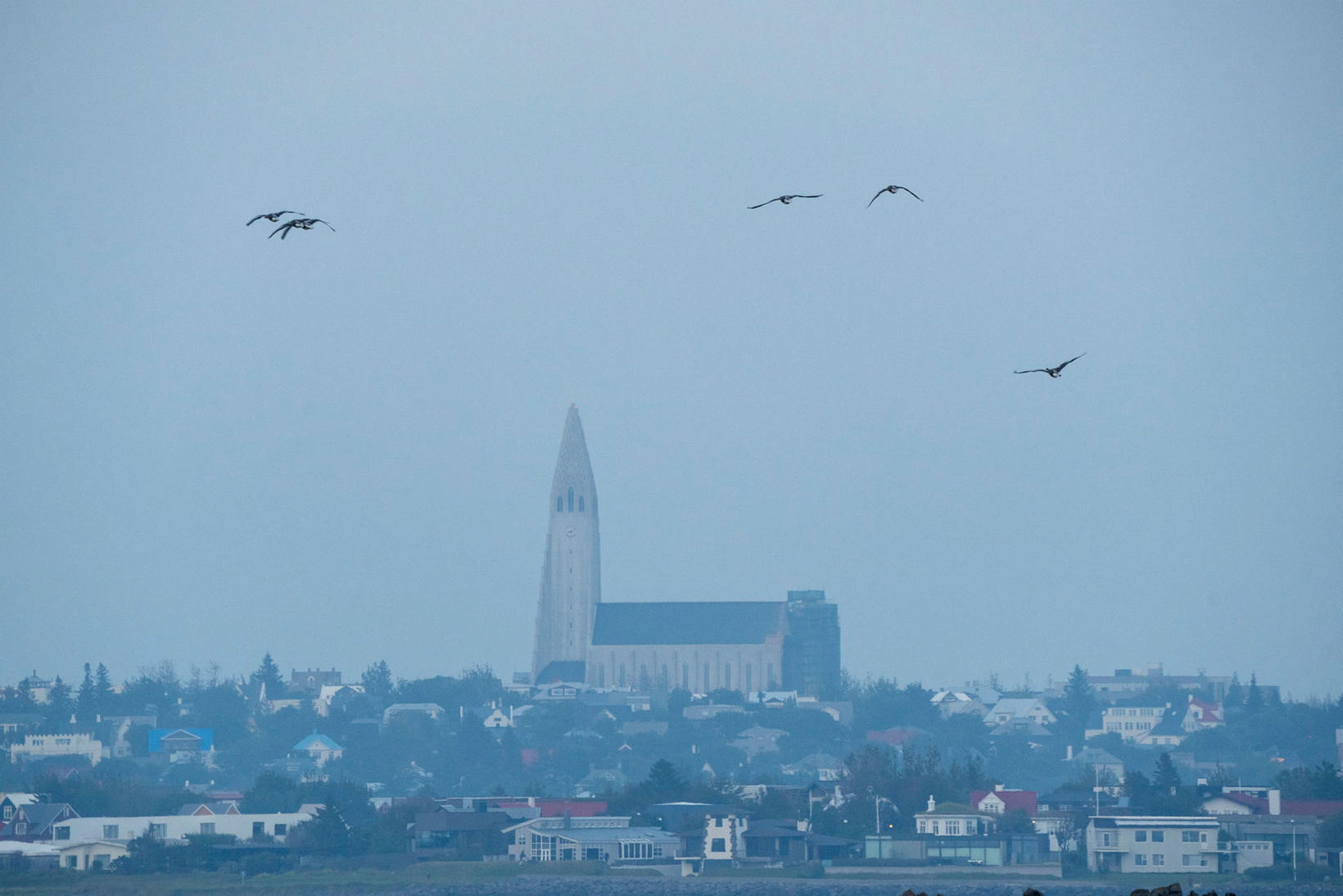Highest sulfur pollution in Reykjavík since start of volcanic unrest
Monitoring stations in the capital area have this morning recorded the highest levels of sulfur dioxide (SO₂) since volcanic activity began on the Reykjanes Peninsula. According to the City of Reykjavík’s website, 10-minute peak values have reached or exceeded 2,000 micrograms per cubic meter.
Although there are signs that the levels are now decreasing, a thick volcanic haze still lingers over the city. This haze contains pollutants that transform into substances such as sulfate (SO₄) and sulfuric acid — which are not detected by standard SO₂ monitoring. However, measurements of fine particulate matter (PM) show that this pollution is widespread, with high levels recorded at all monitoring stations across the city.
The Reykjavík Health Authority is urging residents to limit outdoor activity and avoid physical exertion, especially vulnerable groups such as children and outdoor workers. At current pollution levels, sensitive individuals may experience coughing and irritation in the eyes, throat, and nose. Healthy individuals may also experience respiratory symptoms and eye or throat irritation. Volcanic haze can cause fatigue, headaches, eye and throat irritation, and flu-like symptoms.
It is not recommended for young children to sleep outside while the haze remains over the area. In general, people are advised to stay indoors with windows closed and ventilation systems turned off, breathe through the nose as much as possible, and reduce physical activity outdoors. Dust masks provide no protection against gas pollution.






/frimg/1/60/17/1601701.jpg)


